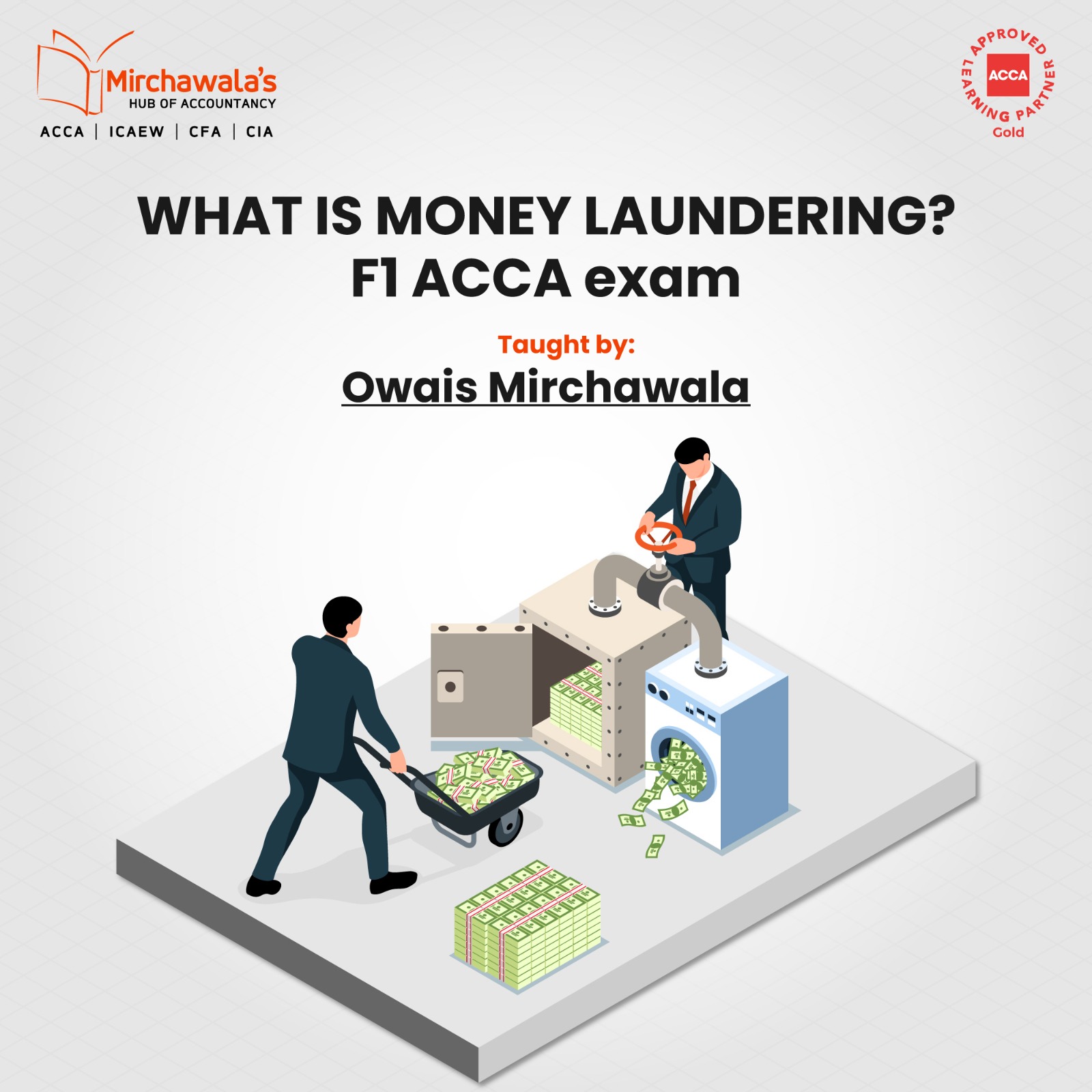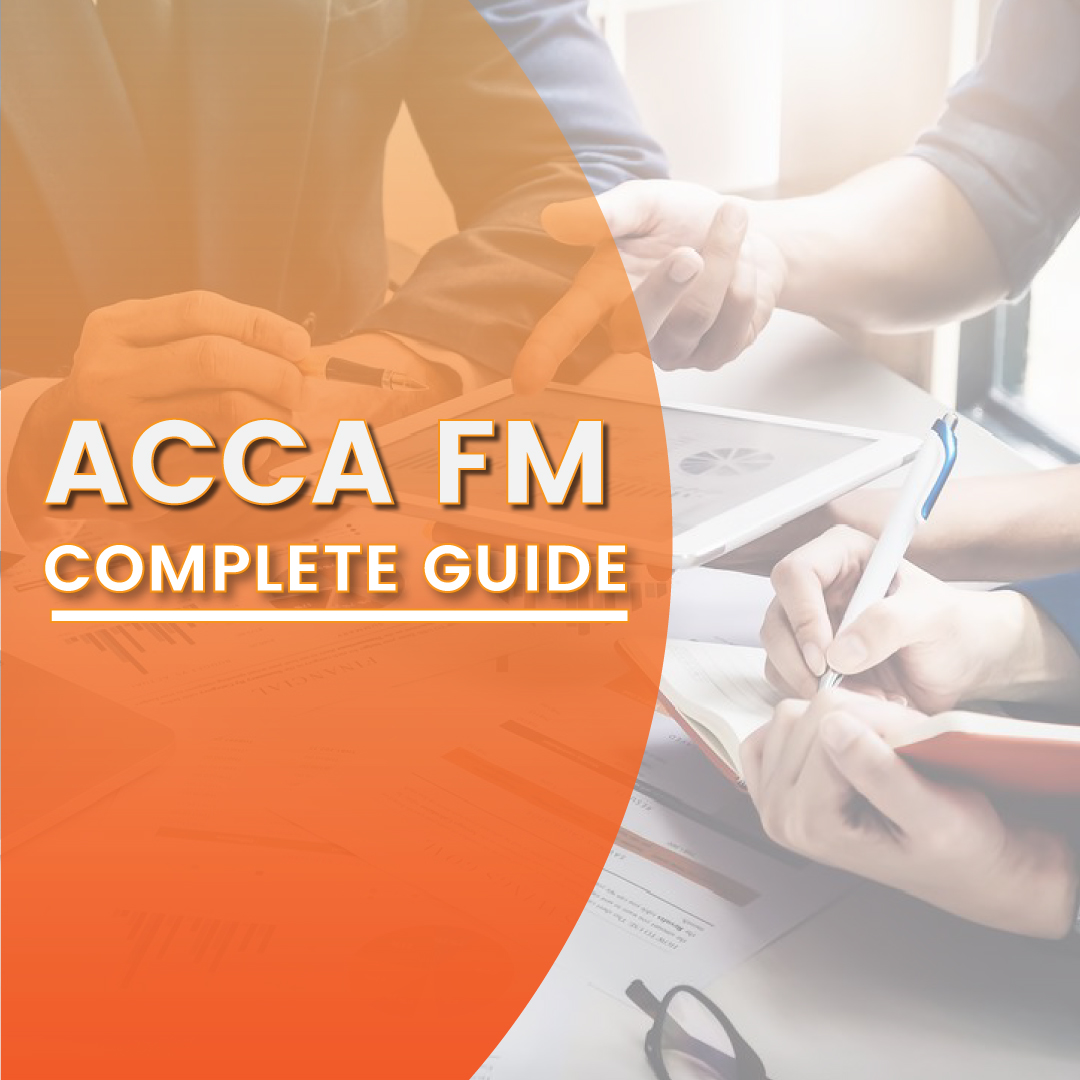What is Money Laundering? What are the top practices of money laundering and their different stages? FBT ACCA exam
Definition
Money laundering as the word itself says, is the cleansing of the money while hiding the criminalized activity involved during the process of obtaining it. These illegitimate activities can include human trafficking, terrorist funding, harmful drug supplies, etc.
Latest news : The ACCA Anti-Money Laundering resource for practitioners has been updated as of March 2022 and includes detailed guidance developed by CCAB and a free on demand lecture and standard documentation.- Acca Global
Reasons to involved in money laundering
There are despicably two reasons why people get involved in money laundering. One is when people try tax evasion, especially in countries where direct tax rates are relatively high, such as the United Kingdom. People also get involved in tax evasion due to high corruption and low social welfare for the betterment of society and its citizens.
This is when people feel most threatened by their government and avoid paying their taxes. This problem is common in South Asian countries, including India, Pakistan, Bangladesh, etc.
Root Cause Of Money Laundering
However, another root cause of money laundering is when people intend to hide the real source of income because it is obtained via unauthorized sources; thereby, it is important to hide it to stay protected from regulations and law enforcement.
Before we move to the definition of money laundering, let me tell you that this topic is part of the ACCA F1 paper, taught by Owais Mirchawala and is highly examinable topic in Acca. If you are an ACCA aspirant, you must understand the topic well.
What Is Money Laundering In Business And Technology – FBT Exam
The entire idea of converting black money (illegally earned money) into white money (legally earned money) is known as money laundering.
The Top 5 Practices of Money Laundering
After you are clear on what money laundering is in business, here are a few common practices applied to perform money laundering all around the globe.
Smurfing a large amount of money into small transactions
Smurfing is a process where the money launderer tries to evade the scrutiny of government agencies, and henceforth, they break down this amount into small transactions that are unquestionable under the government radar and hence easily transmittable from one account to another.
Example : To further comprehend, if a person carries illegal money of around $ 50,000, which needs to be cleaned out, but the law restrictions are up to $ 10,000, To avoid being on the government’s radar, they need to divide their transactions in a way that is not above the threshold amount. This way, they can legitimise their illegal money under legal considerations.
Deterring money via casino
Gambling is the most conventional method of converting black money into white money, especially in Western cultures, where going to casinos and bars is a common practice. The majority of people trade their money for chips to gamble with, but instead, they trade it back for cash-outs, which in turn provide them with clean, legal funds. The method intends to be very simple henceforth; it is easily identifiable by the authorities and is a risky way of doing money laundering. People often divide their money into separate gambling accounts to remain concealed.
Practical Example: One of the most historic incidents attached to this method of money laundering occurred in federal court. A professional gambler from New Jersey named Richard Dougherty was charged with structuring financial transactions illegally, including cashing in hundreds of thousands of dollars in chips at Ameristar Casino.
If you are interested reading full case study , read more
Shell corporation
It is common for shady businesses to form shell companies for themselves. These companies possess no significant assets. These companies are legitimate but are frequently used by shady businesses to convert their black money into white, which can then be utilized for authorized purposes. The United States, for example, has relatively high tax rates, which makes them attractive to businesses for tax evasion and avoidance. Wealthy individuals often take advantage of tax havens, such as shell companies, to avoid tax brackets due to the progressive taxation system in place.
In some cases, individuals with substantial earnings set up shell companies in one or more locations, such as the Cayman Islands. It is a form of tax evasion in which earnings are channeled through shell companies in such a way as to not be counted as personal income. It is feasible to relocate profits to a shell corporation in a tax haven as part of a strategy for tax evasion. (Tax evasion – Acca Global )
To avoid paying US taxes on the profits from purchasing goods from abroad, a US corporation may purchase the goods through a non-resident shell company situated in a tax haven, where it is referred to as an offshore company.
To move the profit to the tax haven, the shell firm would buy the goods in its name, mark them up, and then sell them to the US company. It’s possible that the goods won’t ever leave that tax haven and will instead be delivered directly to the US corporation. The profit of the shell company is not subject to US income tax because it is not based there, nor is it subject to tax in the tax haven jurisdiction because it is an offshore corporation.
The sale is considered to have occurred in the United States, and the gains are considered not to have been made in the jurisdiction under the tax haven statute. US company executives would deduct a salary (or fees, consultancy fees, etc.) from the profits of the company because personal income tax in the US is substantially less significant than corporate income tax.
Money laundering via the trade in diamonds and gold
Due to their intrinsic value, jewels like diamonds and gold have been used as a means of money laundering for centuries. The launderer cleanses their money by trading the cash in return for these jewels, which is the easiest way for transportation and usage in cases of corrupt crime. This is one of the common practices of money laundering. We at Mirchawala’s Hub of Accountancy teach every topic with patience and in an easy-to-understand way to make sure the students have grasped the topic.
Cash smugglers trade money across borders.
Money laundering is often carried out through the smuggling of cash across international borders, with the funds then being deposited into various bank accounts. To avoid detection, the amount being transferred must be below a certain threshold. It is worth noting that over 10,000 cash smuggling accounts are identified in UK banks each year, with the majority of these accounts belonging to individuals under the age of 21
Practical example : Money mule Ayyan Ali was arrested on March 14, 2015, at Islamabad Benazir Bhutto Airport by customs, who recovered $ 506,000 from her luggage, which was being transported to the UAE. In terms of money laundering, it was one of the most high-profile cases in the history of Pakistan.
Read the full case study here –Zardari’s aide facilitated Ayyan in ‘money laundering’, says ASF official
Now that you have learned what money laundering is and its top practices, In the next section, we will go through the different stages of money laundering. Hopefully, you are finding this post helpful and insightful. If you need expert guidance to understand this topic and many more, consider joining classes by Owais Mirchawala.
Three Stages Of Money Laundering
What are the three stages of money laundering?
Placement-First Stage
The first and most important step in money laundering is placing dirty, unauthorized funds earned through bribery, corruption, and theft into the financial system. It is possible to accomplish this by dividing the money into smaller transactions. The use of fictitious sales and purchases and the appointment of ghost employees and customers are examples of this practice. By doing so, illegal funds may be disguised as legitimate funds and placed in legitimate financial transactions. This stage of money laundering is highly detectable by legal authorities, making it the riskiest stage
How these are done ?
These placements are done in various ways:
Through the process of money merging, people frequently combine illicit funds with legitimate revenue. This is frequently done in establishments that only accept cash, like casinos, hair salons, and supermarkets. These kinds of enterprises frequently conduct large numbers of cash transactions each day, which makes it simpler for illicit funds to be mixed in without arousing suspicion from the law.
Many people use invoice fraud as a method of laundering their illegal funds. Making an unlawful transaction seem legitimate entails inflating or deflating the value of sales and purchases. Some even fabricate transactions that never occurred in order to support their offshore businesses.
Layering-Second Stage
Separating illicit activity from its source is the second procedure in a sequence of processes that make up money laundering. Criminals use a number of strategies to accomplish this, one of which is to conceal the unapproved source. To conceal the audit trail of unlawful activity, layering, which involves many transactions and bank accounts, as well as the use of trust foundations and cooperatives, is used.
Integration-Third stage
The process of money laundering entails several stages, with the final one being integration.
At this stage, the launderer usually invests their unlawfully acquired funds in diverse financial instruments to make them appear lawful. Once the funds have been invested in various assets, the launderer may perceive the audit trail as sufficiently obscured and proceed to utilize the money for legal purposes, such as acquiring lavish items such as homes and vehicles.
After the layering process is concluded, the illicit funds are reintroduced into the economy as clean and legitimate capital.
“If you aspire to excel in a particular subject, consider the possibility of enrolling at Mirchawala’s Hub Of Accountancy.” for advance course ACCA, ICAEW, CFA & CIA and many more .
Conclusion :
So, this was all about what money laundering is, how it is done, and its different levels. To conclude, money launderers who deal with hundreds of millions of dollars require a secure way to hide their funds from authorities and keep them out of sight.
The Question That Often Arises Is: Where Do They Keep This Money?
Swiss banks offer a solution for such individuals by providing a secure location to store their funds and ensuring that their identities remain hidden at all times. This improves the credibility of Swiss banks and makes them a reliable option for such individuals.
The illicit practice of money laundering poses a significant danger to national security and is deemed to jeopardize not only the domestic financial system but also the global economy.
Thats why Acca have launched ACCA Anti-Money Laundering guidelines which students are being taught in business and technology course at Mirchawala.
To curb such unlawful activities, various anti-money laundering initiatives have been established. Furthermore, financial institutions that previously struggled to combat this issue have enhanced their technological capabilities, resulting in more efficient strategies for addressing this problem.
That’s it for now. If you are looking for the right teaching guidance for your learning journey, Contact us; we have the best teaching team to educate and empower you until you succeed in your ACCA exam.
– Written by Hafsa Yahya, Inspired ACCA student at Mirchawala’s hub of accountancy












[…] to this detailed article on the International Financial Reporting Read more September 12, […]
[…] to this detailed article on the International Financial Reporting Read more September 12, […]
[…] to this detailed article on the International Financial Reporting Read more September 12, […]
Comments are closed.